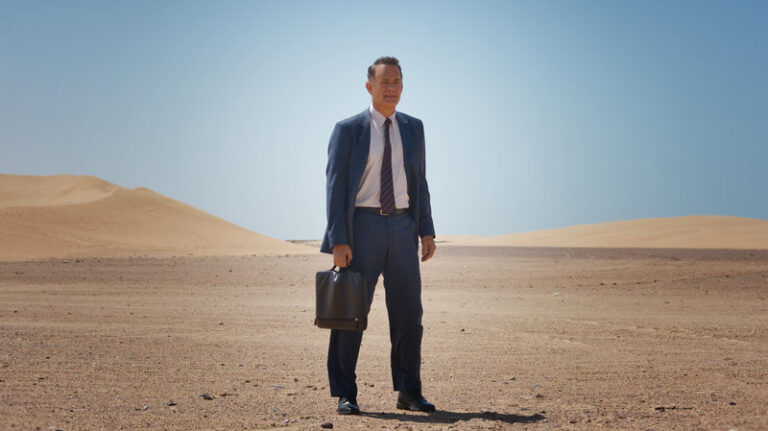In his latest movie, A Hologram for the King, Tom Hanks portrays a middle-aged American businessman who travels to Saudi Arabia, where plans are underway to construct a new city in the desert. Hanks’ character, Adam Clay, aims to convince Saudi officials to allow his company to offer IT technology and support for this ambitious project.
No matter what we’ve done, there comes a point where you think, ‘How did I get here?’ – Tom Hanks
During an interview with Fresh Air‘s Terry Gross, Hanks shared that he strongly resonates with his character’s feelings of uncertainty and disconnection. “Regardless of our achievements, we all reach moments where we ask ourselves, ‘How did I end up here? When will they uncover that I’m actually a fraud and take everything from me?'” Hanks elaborates.
Even after winning two Academy Awards and being featured in over 70 films and TV productions, Hanks admits that he still experiences doubt in his talents. “It’s a balancing act we all navigate,” he states.
“There are days when I know that by 3 o’clock tomorrow, I need to deliver a certain emotional performance, and if I can’t accomplish that, it means I might have to pretend,” he explains. “If I pretend, there’s a risk they might catch on to my act, and if they do, that would be catastrophic.”
Key Moments from the Interview
On what attracted him to A Hologram for the King
The dilemma that Alan Clay faces resonates with the challenges of today. If I had to condense it into a single word, I’d say Alan Clay grapples with China. China has taken the jobs he depended on, representing the many setbacks in his life—he’s divorced, unable to pay for his child’s education, and now he must use his limited skills in sales in a place as unfamiliar as Mars—Saudi Arabia.
Reflecting on Hanks’ independent upbringing
My father eventually found love after three marriages, and when he did, he and his partner were so preoccupied with their own excitement and struggles that I felt more like a tenant in a house than a member of the family. I had the freedom to come and go as I pleased without much oversight.
There was one occasion in high school when I had the flu and spent two weeks at a friend’s house. When I returned home, my dad simply asked, “Where have you been?” I replied, “I had the flu, and stayed at Kirk’s house.” His response was, “I assumed you could manage on your own.” This sense of freedom wasn’t born from neglect, but rather from their busyness. Combine that with my attention deficit disorder, and you end up with who I am today.
On his childhood TV habits
I kept track of time based on what was airing on television. Our house lacked a clock, and I didn’t have a watch. The end of Love of Life meant it was time for school, while halfway through Hogan’s Heroes indicated that dinner was about to be served. Consequently, every 12 minutes would see my mind wander during commercial breaks. This still affects me today; I require complete immersion to stay focused for more than 20 minutes.
On the appeal of portraying courageous characters in films like Saving Private Ryan, Apollo 13, Captain Phillips, and the upcoming Sully
These characters aren’t fearless; they contend with their inner fears. What draws me to these roles is their battle with personal terror. For example, the research I did for Saving Private Ryan revealed that many leaders in combat experienced significant fear of making a decision that could put others at risk. This immense pressure of command is something that requires constant management; you cannot afford to hesitate, and self-belief becomes crucial for success. It’s not an easy task…
All these characters achieve something notable, but that journey is earned through hard work and experience. No one becomes a cargo ship captain without extensive training. At some point, everyone grapples with a loss of confidence, and while my life has never been endangered, the creative artistic process similarly requires confronting and overcoming self-doubt.
On why he tweets photos of lost items like gloves and shoes found on the street.
I perceive a narrative in every lost item. The saddest ones are a little girl’s pink mitten or a tiny glove, symbolizing a child now missing a matching glove at home, leaving me to wonder, who lost it? What circumstances led to its loss?
Each item tells a kind of haiku-like story. Some are luxurious leather gloves from high-end stores, while others are playful mittens with Snoopy designs. I often wonder about the person who passed by and left these items behind. It’s like urban archaeology, piecing together stories from the lost gloves and their placements.


